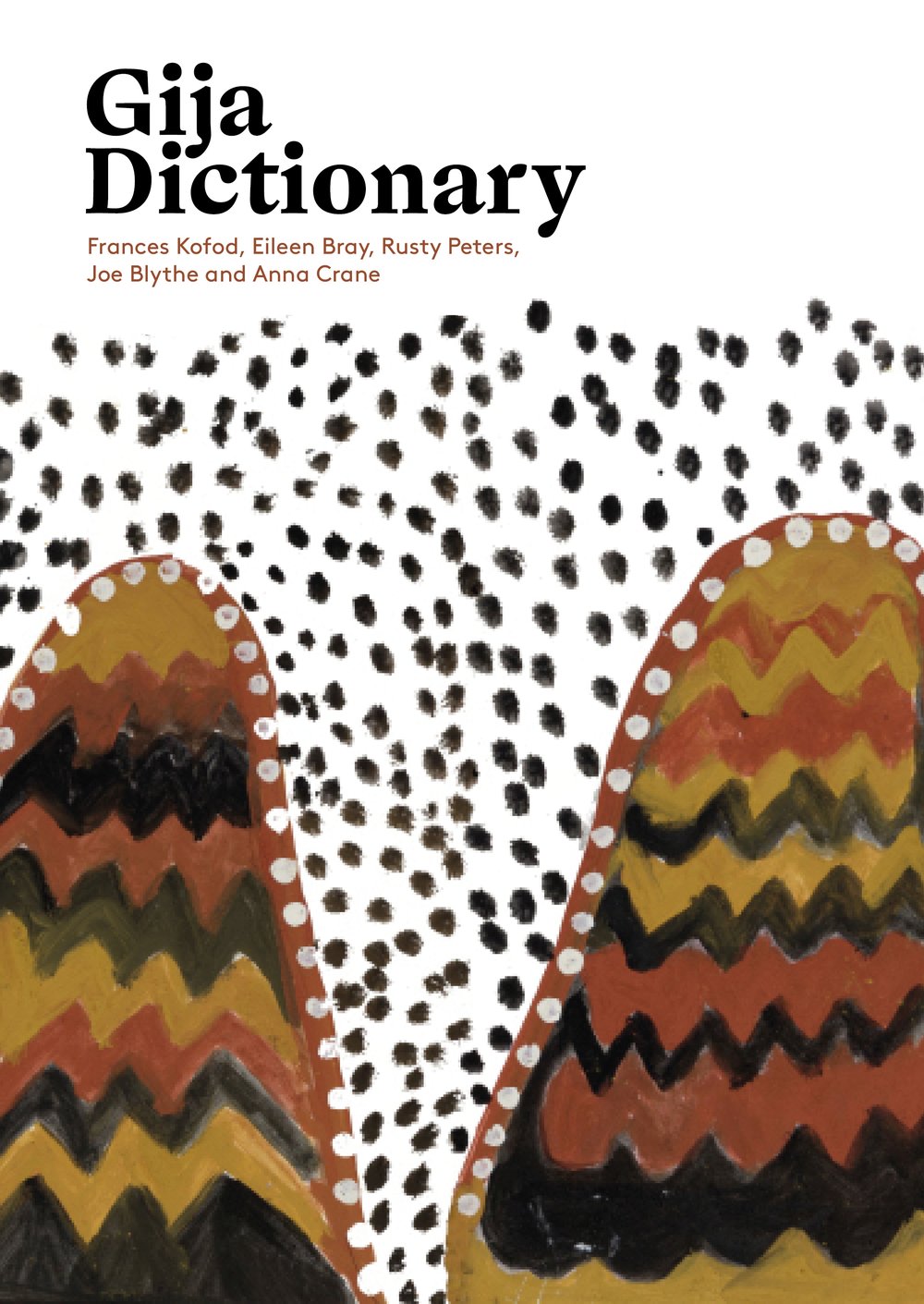Gija Dictionary

Gija is a traditional language of the East Kimberley in the north-west of Australia. It is a landscape of weathered hills hugged by spinifex, startling rocky outcrops, hidden waterholes and dry riverbeds that turn to raging torrents in the wet season. Gija country extends north of Warmun (Turkey Creek) in the upper reaches of the Ord and Dunham rivers, south to Halls Creek and west to Lansdowne and Tableland stations. The Purnululu (Bungle-Bungle – Boornoolooloo) National Park sits in Gija country.
From the late 1800s, Gija people suffered devastating losses: invading pastoralists brought cattle that damaged waterholes and devastated the ecosystem; fortune hunters chased gold at Halls Creek; and government rounded up and forced people onto cattle stations. In the late 1960s when Aboriginal stockmen were granted equal wages, many were thrown off the land. This second wave of dispossession saw Gija people move to Wyndham and Halls Creek and later Warmun (Warrmarn), where most Gija people still live today. Many contributed to this dictionary including many well-known artists who use painting to pass on their linguistic knowledge.
Despite this tragic history of loss, Gija people remain on their country, living their culture and speaking language. This new dictionary of Gija, the most comprehensive ever published, is a testament to their resilience.

Frances Kofod has worked with Gija, Miriwoong and Gajirrabeng languages since the 1970s and has been involved in many Gija language and culture projects at Warrmarn (Warmun Turkey Creek), including helping establish Mirima Dawang Woorlab-gerring Language and Culture Centre in Kununurra (WA).
Mr R Peters was born in 1935 at Balinyin, Springvale Station, in the East Kimberley. When young he learned Gija law in the bush. After he and other Aboriginal stockmen were forced to leave stations after the granting of citizenship and equal wages in 1967, Mr Peters began teaching Gija language at the Ngalangangpum School at Warmun and dedicated his life to passing on Gija culture.
Eileen Bray grew up in the bush in Gija country on Binoowoo (Alice Downs) and Gilban (Mabel Downs). She has taught Gjia language at the Ngalangangpum School at Warrmarn (Warmun Turkey Creek) since the 1970s, and has been a senior language consultant on many Gija projects.
Anna Crane has worked on Gija language documentation, description and revitalisation projects since 2005, including as an educational linguist in community schools, and as assistant to a Hans Rausing Endangered Languages Documentation Project.
Joe Blythe is an interactional linguist specialising in Australian Indigenous languages. His research interests include gesture and embodiment, turn-taking, spatial cognition, language evolution, kinship concepts and social identities.
